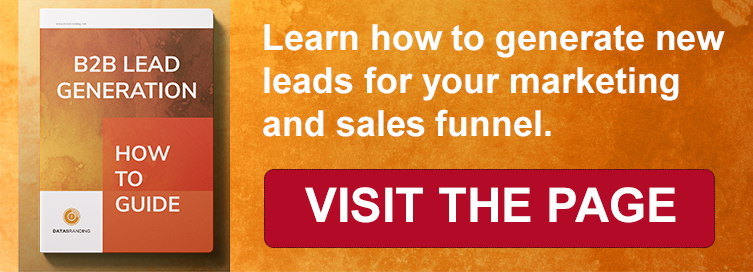 Every marketing strategy needs an outcome that can be repeatable and scalable; therefore, a methodology has to be the foundation to avoid crucial mistakes in the marketing model. Discover 4 methodologies that can improve your strategy:
Every marketing strategy needs an outcome that can be repeatable and scalable; therefore, a methodology has to be the foundation to avoid crucial mistakes in the marketing model. Discover 4 methodologies that can improve your strategy:
The methodologies that we are going to talk about in this article will solve:
- How to attract and reach your buyers.
- How to engage with your leads.
- How to help them decide.
- How to follow up your leads.
Why do you need a Marketing Methodology?
A methodology is a path to get from point A to point B. The main goal is always to get the same result as long as you make the same steps.
Marketing is not an exact science; therefore, the results will not be the same, but they will move the needle in the same direction.
The methodology will help you understand what triggers you need to pull to move the action forward. It will set up the tactics you need to achieve the marketing, communication, and sales results your organization needs.
Ask your marketing agency what methodology and framework they use to deliver results.
Companies need a methodology to section a buyer decision process and a sales process. You might need a mix of methods that can perform well working together.
Asking your marketing agency what methodologies they use will help you separate those agencies that only create pretty design work. Unfortunately, many agencies do it without any purpose or strategy behind them. I split the four methodologies to help your company grow and build a robust process. These are the methodologies that we have used and keep over many years because of their excellent results:
1 Methodology to reach and attract
Inbound marketing is one of the complete methodologies to build a clear map for buying and selling. We need the outbound process and traditional advertising methods to make it more solid. The theory to explain the previous stages of Inbound marketing is the moments of truth. You have four main steps:
- Stimulus.- It is a communication material that will help the audience make awareness, entice and engage with a solution, service, or product.
- Zero moment of truth.- This stage is when you build sufficient trust into a lead to take action; therefore, call you by phone, enter your store, fill up a form or download an ebook on your website. They are willing to take the risk to talk to you and go further into the research for solving their issue.
- The first moment of truth.- This stage is when the lead exposes to the product or service, on the shelf, in a showroom, with educational content, in a sales meeting, and they confront your solution amongst others.
- The second moment of truth.- This stage is when the lead becomes a client and purchases the product.
Traditional advertising creates the stimulus and the awareness. This process aims to be at the top of the audience's mind. When people have a problem, they recognize your solution. For example, if you are thirsty, you will think of Coca-Cola as the top-of-mind brand to refresh your thirst. These are the overall steps:
- Message. The process starts by making appealing content material that will resonate with your audience represented by a target group or people with similar sociodemographic characteristics. Nowadays, you can choose particular preferences in social media thanks to all the users' data.
- Remembrance. Your audience will remember you by repeating the message into the mass media channels that your target group exposes.
- Media. This step involves marketing channels and media, from tv advertising, print advertising, radio, and social media selection. Each media will need the same message with a different format, choosing the one that adapts to the channel. For example, a blog will need a 600 words article; a youtube channel will require a two-minute video; a podcast, 20-minute audio; radio, a 20-second jingle, and tv, a 30-second commercial.
- Trust. Through repetition, the lead will recognize your company and your solution as a trusted source of information and a quality product.
This methodology is simple and will ve very quick to make awareness but a long-term commitment to remain in the media to build trust.
Inbound marketing is for attracting rather than reaching. This methodology starts with people being aware of a problem and researching a solution online. The stages are:
- Attract. The answer to whatever they asked to the search engine like Google will be in your content; therefore, Google will recommend your site as a trusted source of information and send you tons of traffic or leads to your website. All your content is going to be educational.
- Convert.- When people get into your website read about the solution of their problem, you will entice them to learn more and trade more content in exchange for their email and name. This way, you can perform a nurturing campaign and follow up with sales reps.
- Close.- Your sales reps will follow up the lead and help them advance in their decision process, trying to be helpful and unbiased with the information they provide. The natural result of a grand process is to close.
- Delight. When they become clients, you will delight them with more content around your solution and how they can make the most out of it.
2 Methodology to engage
People are more distracted than ever. With their phones giving them notifications every minute, you need a message that can get their attention in less than 5 seconds. So how do you do this? By talking about their problems. When you speak only about how great you are, they will get distracted by another subject. Still, instead, if you talk about how they can solve a problem they have, their mind will be in your message.
It is a mixture of their problem and why you do things. By this, I mean you need to convey how they are going to feel with your solution and make them feel they are part of your tribe; they belong because you share the same values and beliefs with them.
The messages should be rational by talking about their problems and irrational with compelling images to make them feel. Tho achieve this, excellent and aesthetic images are needed in your communication, making it a bit of an art.
3 Methodology to map the buyer's decision process
The buyer's journey is the process people go through to make a buying decision. It has three stages:
Awareness.- People detect they have a problem or issue. They start research to solve it. You need to talk about their problems and solutions. Make them understand why they need a solution like yours.
Consideration.- The research is going to make your lead evaluate several solutions. Your communication in this stage will be about the results your solution will provide. Content will separate you from other solutions and outcomes.
Decision.- Your leads will decide and evaluate if you are the right fit and capable of providing the result. Your communication has to be about you, your experience, service, and benefits. Many communication materials start with the last stage. By talking about how good they are at first, they are making a mistake instead of people's problems. Therefore, each step of this methodology aligns with the decision process of the people, not the seller's process.
4 Methodology for sales and follow up
The issue salespeople struggle with the most is how to evaluate if a lead is going to be a good fit, is willing to buy, and will buy shortly. Sales reps need to listen to the prospect and not make the typical sales pitch they repeatedly do to all the leads.
The methodology we recommend to our clients' salespeople has three stages:
- Issue.- Listen to what the issue your prospect has and how they express the symptoms of the problem. By this, you will understand what they are trying to solve, make the notion that you are there for help, not to sell. You can explore if they have tried other solutions and the not satisfying outcomes, what didn't work. You will find if your solution and the prospect can fit. You can discover the goals and budget or the previous expenses they made.
- Impact.- By asking what is going to be the impact of solving the problem inside the organization, you can find if there is a sense of urgency, who else is impacted by the solution, quantify the result they are expecting or help them learn how to quantify, and mostly see how they see a successful outcome in the future. You can discover others people involved, other decision-makers and set up the expectations.
- Importance.- Try to talk to your prospect about how important it is to solve the problem and understand if they have other priorities in their company. If they don't give you good reasons about the importance, maybe they are not serious about solving it or don't have a realistic timeframe.
These four methodologies are a mix we use in Databranding and work together to help our clients attract, engage and make more sales opportunities for their business.

